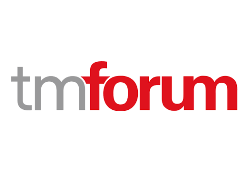Estimates suggest that 5G will require up to five times as many base stations as 4G. Operating costs will also rise as each 5G base station is expected to consume three times as much power as its 4G counterpart. These, alongside limited space, are among the key reasons why infrastructure-sharing is a growing trend among CSPs. This means multiple operators delivering 5G services via the same 5G base station, with resources allocated based on user and service requirements.
Getting down to the details
Chinese CSPs, for example, are expected to invest up to $184 billion (€165 billion) by 2025 collectively to achieve nationwide 5G coverage. Earlier this year, China Unicom and China Telecom struck a deal to co-build networks to get there cost-effectively.
Now, these two telcos are working together through a TM Forum proof-of-concept Catalyst project to lead the way on ironing out some of the finer points of infrastructure-sharing. They are also going beyond the basics to explore how such infrastructure-sharing initiatives can attract third-party investment to scale 5G faster.
The Blockchain-based 5G Collaborative Economy Catalyst team estimates that the work could save China Unicom and China Telecom a combined 320 billion RMB ($45.5 billion) (€40.8 billion) in 5G infrastructure investment costs.
With China Telecom and China Unicom as the Catalyst Champions who set the challenge, the participants collaborating around the solution are IBM, Whale Cloud and the China Academy of Information and Communications Technology (CAICT).
They have developed a proposed solution to address some of the key outstanding questions and challenges around infrastructure-sharing:
- How to raise funds in an open and transparent way before building shared infrastructure
- How to ensure collaboration is efficient and maintains trust
- How to reach a leasing agreement rapidly and evaluate the service objectively
- How to get statistics and ensure fast, error-free settlement
Enter the blockchain
Looking at the issues they faced, the team quickly realised that blockchain’s core features of decentralisation, transparency and immutability could be the answer.
The project follows on from a previous phase of the Catalyst in which the team looked at how to use blockchain to help CSPs succeed with data monetisation.
In the latest iteration, the team has developed an architecture for a platform which supports:
- Resource tendering from private investors
- Resource brokering: Multi-party supply and demand matching
- Resource leasing: The ability to apply for and approve the required resources to form a lease cooperation
- Service evaluation: The ability to introduce reporting barriers and evaluation channels to establish service monitoring and feedback mechanisms
- Statistics and settlement: Eliminating inconsistencies between the multi-parties
The solution was showcased at TM Forum’s recent Digital Transformation Asia event in Kuala Lumpur.
Bella Chan, Whale Cloud, explained how the work goes beyond traditional partnerships: “The CSP would plan resource to be built and then publish this requirement on the blockchain so that third-party vendors and MVNOs can meet this tender. The highest bidder will be the final investor.” Smart contracts support everyone in this ecosystem approach being paid fairly and automatically.
IBM provides solution design, Blockchain-as-a-Service (BaaS) and smart contracts; Whale Cloud contributes solution design, UX/UI design and application development; and CAICT acts as a business consultant.

They deployed their application on TM Forum’s Open Digital Lab, a shared environment to develop and test collaborative solutions. They used and will extend TM Forum’s resource of telecom blockchain use cases. The Partnership Revenue Models asset also acted as a guideline for partnership revenue management.The team used a number of TM Forum assets to design the solution.
“Our team decided to contribute the demo implementation to kick-start continuous innovation of blockchain for telco applications within TM Forum,” said Chan.
The solution the team developed in the previous iteration of this Catalyst is now being commercialised so the signs are promising for infrastructure-sharing to get a whole lot easier soon – which is good news for 5G roll-out and ROI.
Comment on this article below or via Twitter: @VanillaPlus OR @jcvplus






